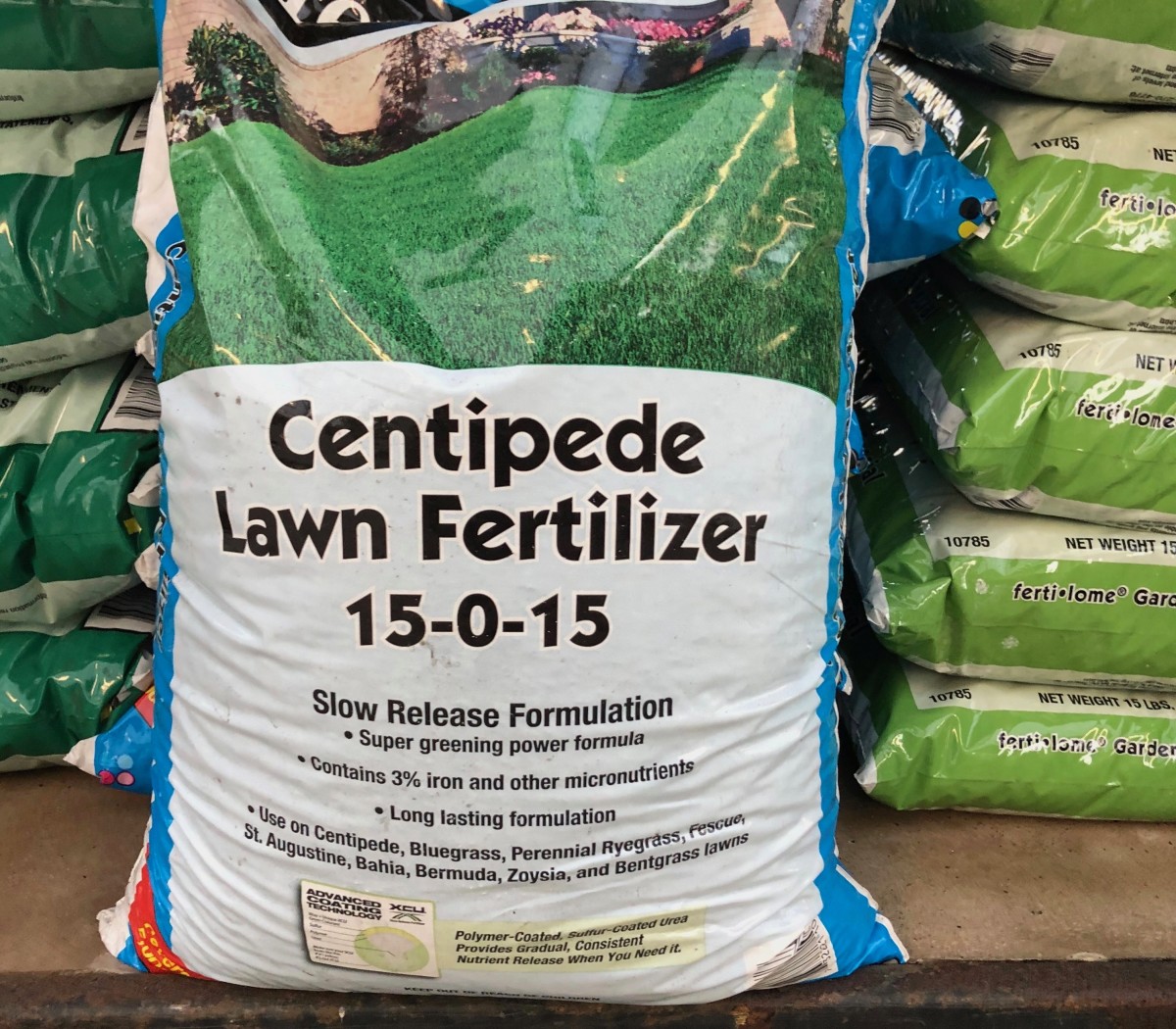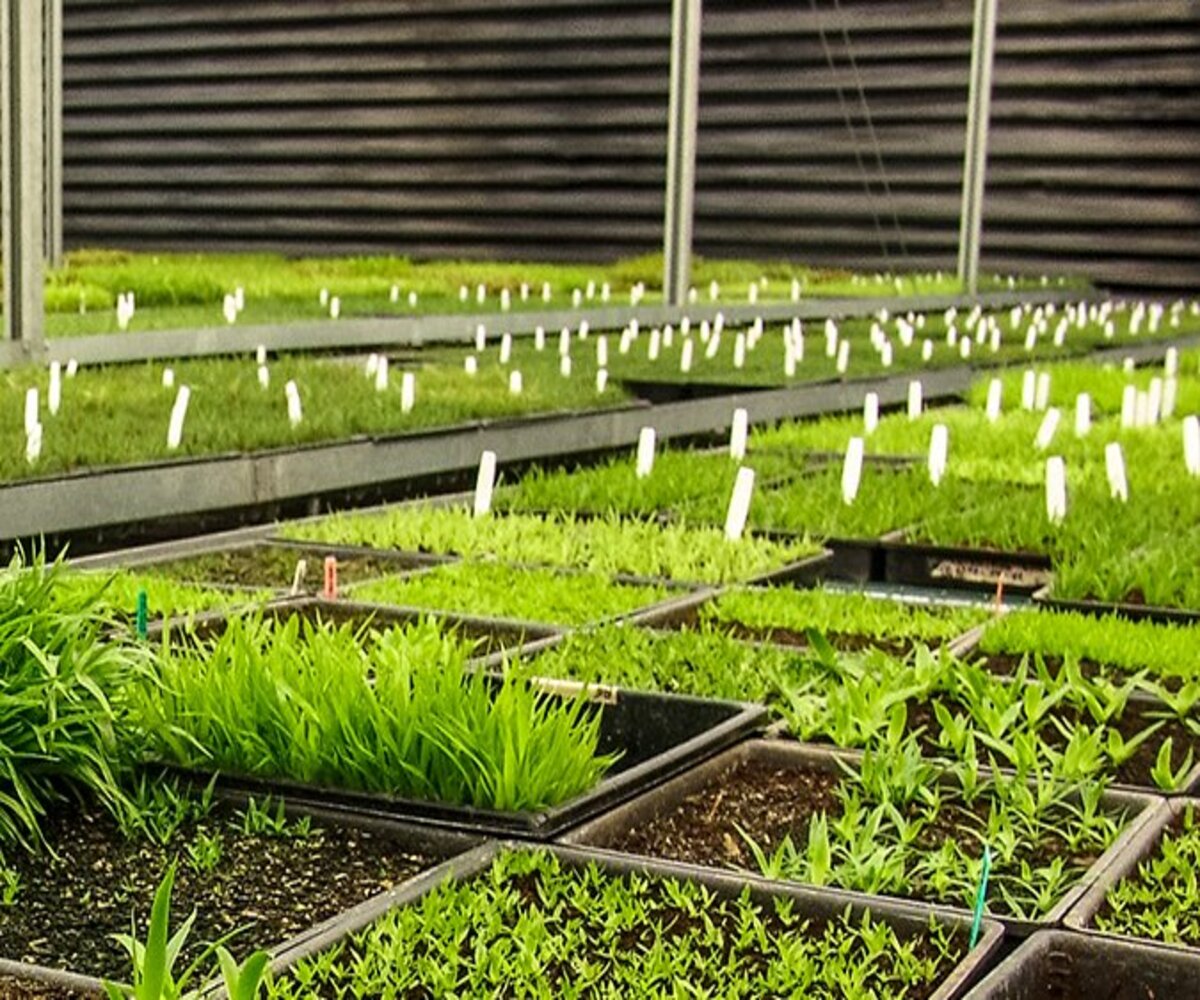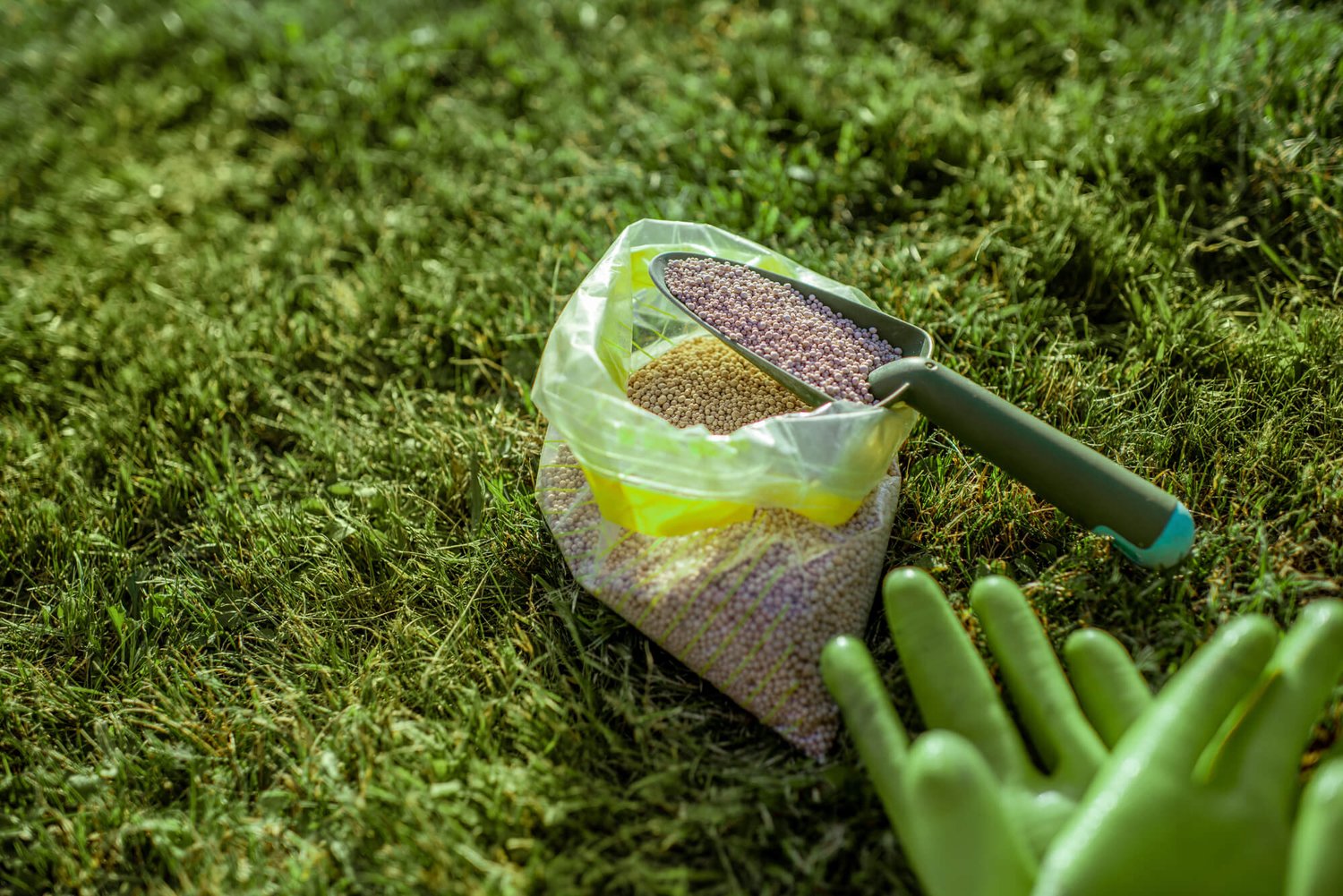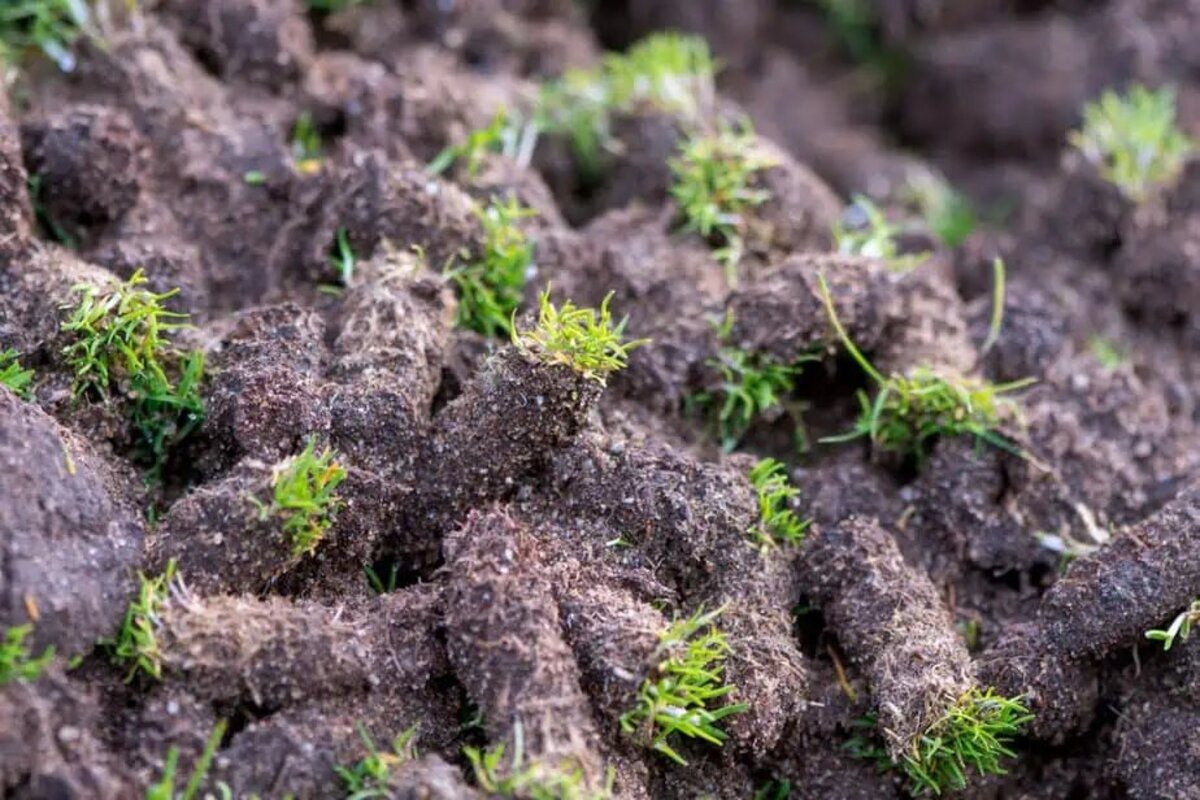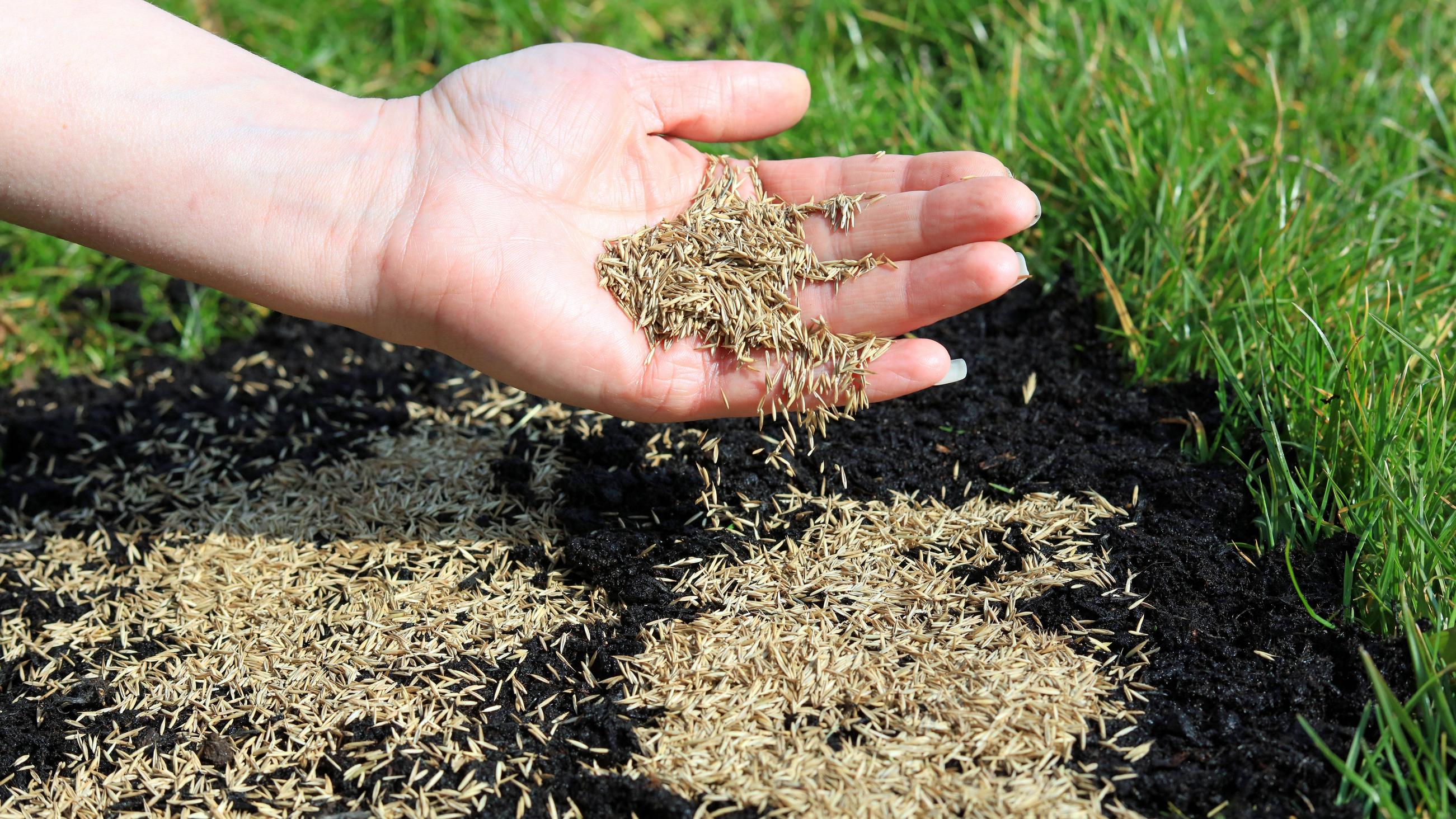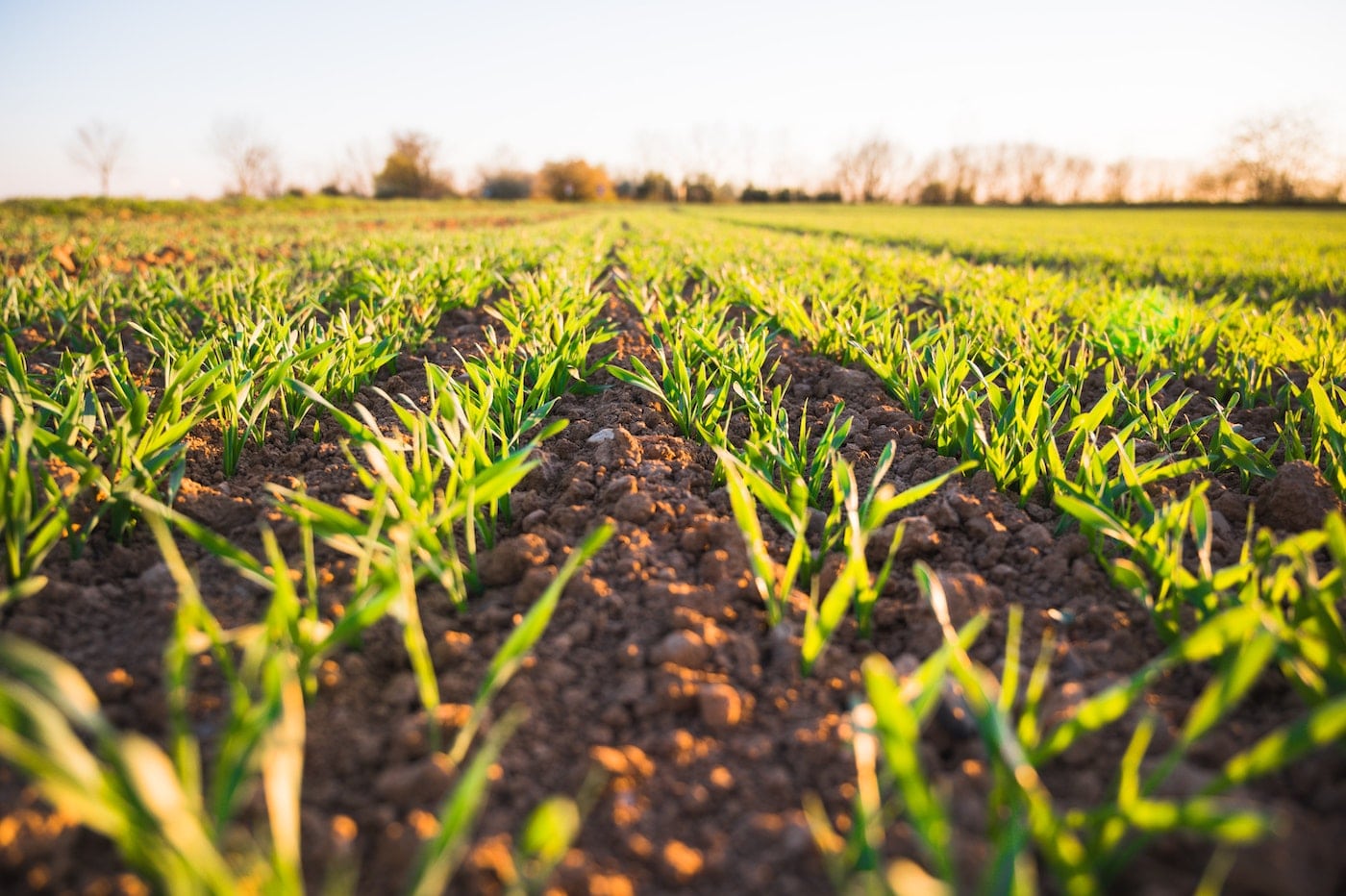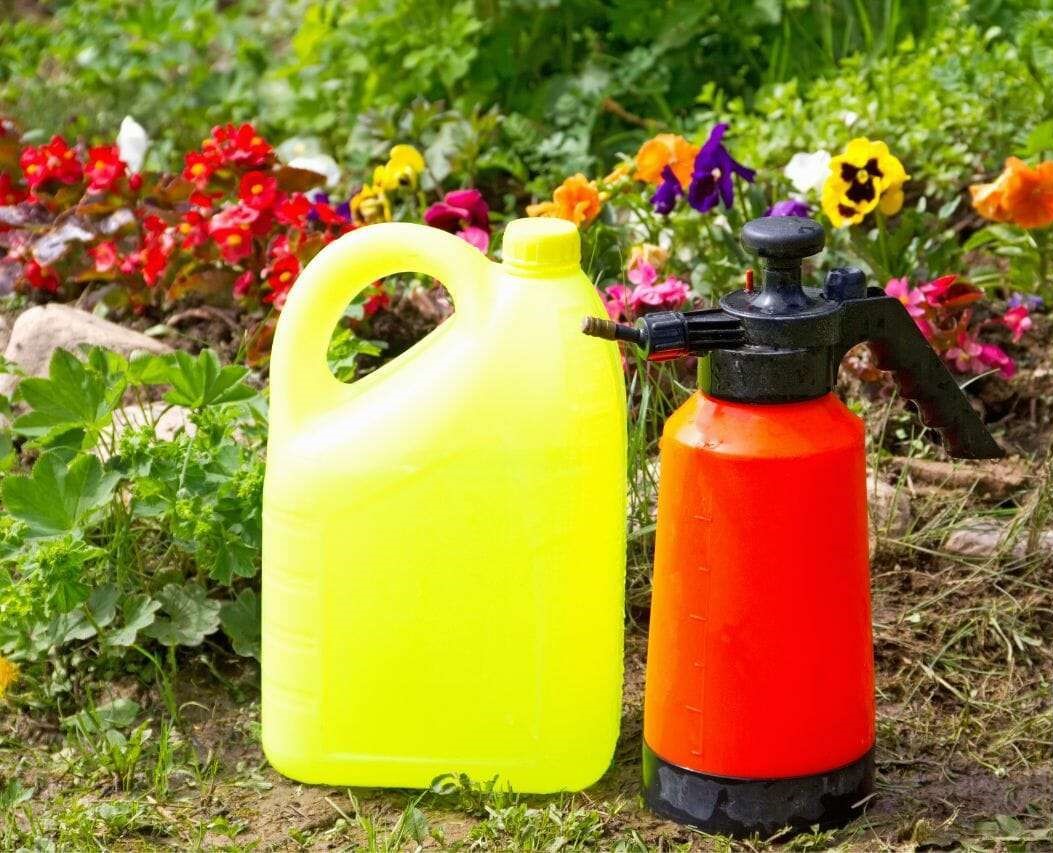Home>Gardening News and Trends>What Fertilizer To Use On Lawn


Gardening News and Trends
What Fertilizer To Use On Lawn
Published: August 5, 2023
Discover the latest news and updates on what fertilizer to use on your lawn. Find expert advice and tips for a healthy and vibrant lawn.
(Many of the links in this article redirect to a specific reviewed product. Your purchase of these products through affiliate links helps to generate commission for Chicagolandgardening.com, at no extra cost. Learn more)
Table of Contents
- Introduction
- Factors to Consider when Choosing Fertilizer for Your Lawn
- Understanding the Nutritional Needs of Your Lawn
- Different Types of Fertilizers for Different Lawn Requirements
- Organic Fertilizers for a Healthier Lawn
- Synthetic Fertilizers for Faster Results
- Slow-Release Fertilizers for Long-lasting Nutrient Supply
- Liquid Fertilizers for Quick Absorption
- Granular Fertilizers for Controlled Application
- Choosing the Right NPK Ratio for Your Lawn
- Assessing Soil pH and Adjusting Fertilizer Choice Accordingly
- Specialized Fertilizers for Specific Lawn Issues
- Taking Proper Precautions while Applying Fertilizer on Lawns
- Recommended Fertilizer Brands for Lush and Green Lawns
- Conclusion
Introduction
Welcome to the world of lawn care, where a lush and vibrant green lawn is the pride of every homeowner. Achieving and maintaining a beautiful lawn requires dedicated effort, and one crucial aspect of lawn care is choosing the right fertilizer. Fertilizers provide essential nutrients that nourish your lawn, promoting healthy growth and ensuring its overall well-being.
However, with so many options available in the market, selecting the appropriate fertilizer for your lawn can be overwhelming. Understanding the different types of fertilizers, their composition, and your lawn’s specific needs is key to making the right choice.
In this article, we will guide you through the process of selecting the best fertilizer for your lawn. We will explore the factors to consider, the various types of fertilizers available, and how to choose the correct one based on your lawn’s requirements. Additionally, we will provide insights on specialized fertilizers that address specific lawn issues, as well as precautions to follow when applying fertilizers.
Whether you are a beginner or an experienced gardener, this comprehensive guide will equip you with the knowledge you need to make informed decisions regarding your lawn’s nutrition. By the end of this article, you will be armed with the confidence to choose the right fertilizer and achieve a healthy, vibrant lawn that will make your neighbors green with envy.
Factors to Consider when Choosing Fertilizer for Your Lawn
Choosing the right fertilizer for your lawn can significantly impact its health and appearance. Before purchasing any fertilizer, it’s essential to consider several factors to ensure optimal results. Let’s explore these factors in detail.
1. Soil Type: Understanding your soil type is crucial when selecting a fertilizer. Sandy soils may require fertilizers with higher nutrient content, while clay soils may benefit from amendments that improve drainage and nutrient absorption.
2. Grass Type: Different grass species have varying nutrient requirements. Some grasses may need more nitrogen for lush growth, while others may require additional phosphorus for root development. Identify the specific grass type in your lawn to choose a fertilizer that meets its nutritional needs.
3. Nutrient Ratio: Fertilizers are typically labeled with an NPK ratio, representing the percentage of nitrogen (N), phosphorus (P), and potassium (K) they contain. Understanding the nutrient requirements of your lawn will help you select a fertilizer with the appropriate ratio.
4. Seasonal Needs: Lawns have different nutritional needs throughout the year. During the growing season, grass may require a nitrogen-rich fertilizer for vigorous growth. In the fall, a fertilizer with higher potassium content can help prepare the lawn for winter dormancy.
5. Slow-release vs. Quick-release: Fertilizers can be categorized as slow-release or quick-release. Slow-release fertilizers provide a steady supply of nutrients over an extended period, while quick-release fertilizers deliver nutrients rapidly but may require more frequent application. Consider your schedule and preference when choosing between these options.
6. Environmental Impact: It’s important to select a fertilizer that minimizes negative impacts on the environment. Look for eco-friendly options that reduce the risk of water contamination and support sustainable lawn care practices.
7. Budget: Lastly, consider your budget when choosing a fertilizer. While high-quality fertilizers may have a higher price tag, they often provide better results and require less frequent application, saving you money in the long run.
By evaluating these factors, you can make an informed decision regarding the fertilizer that best suits your lawn’s specific needs. Remember, each lawn is unique, so it’s essential to tailor your fertilizer choice accordingly for optimal results.
Understanding the Nutritional Needs of Your Lawn
Just like humans, lawns require a balanced diet of nutrients to thrive and maintain their health. Understanding the nutritional needs of your lawn will guide you in selecting the appropriate fertilizer to promote optimal growth. Let’s delve into the essential nutrients your lawn craves.
1. Nitrogen (N): Nitrogen is vital for promoting lush green growth in your lawn. It helps stimulate leaf and stem development, resulting in a healthy and vibrant appearance. Grasses with high nitrogen needs include Kentucky bluegrass and perennial ryegrass.
2. Phosphorus (P): Phosphorus plays a crucial role in root development and overall plant health. It supports strong and robust root systems, enabling grass to withstand stressors such as drought and foot traffic. While phosphorus is essential, excess amounts can contribute to water pollution, so it’s important to only apply what your lawn needs.
3. Potassium (K): Potassium aids in many fundamental processes within the plants, including disease resistance, water regulation, and overall stress tolerance. It promotes strong cell walls and enables grass to recover from damage more efficiently. Potassium is particularly beneficial during periods of drought, high temperatures, or excessive rainfall.
4. Secondary Nutrients: In addition to the primary nutrients (N, P, and K), your lawn also requires secondary nutrients like calcium, magnesium, and sulfur. These nutrients are necessary to maintain proper pH levels in the soil and assist in various physiological processes of the grass.
5. Micronutrients: Micronutrients are needed in much smaller quantities but are equally important for the health of your lawn. These include iron, zinc, manganese, copper, and boron. These trace elements support enzyme activities, photosynthesis, and other vital functions of the grass.
Understanding the nutritional needs of your lawn involves a combination of factors, including the type of grass, the soil composition, and any existing deficiencies. Conducting a soil test can provide valuable insights into the specific nutrient requirements of your lawn, allowing you to choose a fertilizer that addresses any deficiencies effectively.
Remember, maintaining a balance in the nutrient ratios is crucial. Excessive use of certain nutrients can lead to imbalances and cause damage to your lawn. Always follow the recommended application rates and apply fertilizers at the appropriate time to ensure your lawn receives the necessary nutrition without overloading it.
Different Types of Fertilizers for Different Lawn Requirements
When it comes to choosing a fertilizer for your lawn, there are several types available, each with its own benefits and applications. Understanding the different types of fertilizers will help you select the one that best suits your lawn’s specific requirements. Let’s explore these options in detail.
1. Organic Fertilizers: Organic fertilizers are derived from natural sources such as compost, manure, or plant residues. They provide a slow and steady release of nutrients, promoting long-term soil health and microbial activity. Organic fertilizers are preferred by those seeking a natural and environmentally-friendly approach to lawn care.
2. Synthetic Fertilizers: Synthetic or chemical fertilizers are manufactured using inorganic compounds. They are popular for their rapid nutrient release and immediate impact on grass growth. Synthetic fertilizers are typically available in granular or liquid forms, making them versatile and easy to apply.
3. Slow-Release Fertilizers: Slow-release fertilizers provide a controlled release of nutrients over an extended period. They deliver a steady supply of nutrients to the grass, reducing the risk of burning or nutrient runoff. Slow-release fertilizers are ideal for those looking for convenience and long-lasting results.
4. Liquid Fertilizers: Liquid fertilizers are fast-acting and quickly absorbed by the grass. They are typically applied using a sprayer or spreader, allowing for precise and even distribution. Liquid fertilizers are ideal for quick growth or when nutrients need to be readily available to address specific deficiencies.
5. Granular Fertilizers: Granular fertilizers consist of small pellets or granules that are applied to the lawn using a spreader. They come in both quick-release and slow-release formulations. Granular fertilizers are popular due to their ease of application, controlled release mechanisms, and suitability for various grass types.
6. Specialty Fertilizers: Specialty fertilizers are designed to address specific lawn needs. They may include products for weed control, moss removal, or disease prevention. These fertilizers target specific lawn issues and provide the necessary nutrients while addressing the underlying problem.
When choosing a fertilizer, considering the specific needs of your lawn is crucial. Assess factors such as your desired growth rate, lawn condition, and environmental concerns. It’s also important to follow the manufacturer’s guidelines for proper application and dosage to avoid overfeeding or damaging your lawn.
Remember, selecting the right fertilizer is just one aspect of lawn care. It’s essential to complement fertilization with proper watering, mowing, and other maintenance practices to achieve a healthy and vibrant lawn.
Organic Fertilizers for a Healthier Lawn
Organic fertilizers are a popular choice for homeowners seeking a natural and environmentally-friendly approach to lawn care. Derived from natural sources such as compost, manure, or plant residues, organic fertilizers offer several benefits for achieving a healthier and more sustainable lawn.
1. Slow and Steady Nutrient Release: Organic fertilizers provide a slow and steady release of nutrients. As they break down, the nutrients are gradually released into the soil, ensuring a continuous supply for your lawn. This helps prevent nutrient leaching, runoff, and reduces the risk of overfeeding your lawn.
2. Improved Soil Health: Organic fertilizers contribute to the overall health of the soil. They promote the growth of beneficial microorganisms and increase the soil’s organic matter content. This, in turn, improves soil structure, moisture retention, and nutrient-holding capacity, creating a more balanced and fertile environment for your grass to thrive.
3. Reduced Environmental Impact: Using organic fertilizers minimizes the negative impact on the environment. Many synthetic fertilizers contain chemicals that can pollute groundwater or harm beneficial organisms. Organic fertilizers, on the other hand, are composed of natural materials that pose minimal risk of environmental contamination.
4. Long-term Soil Enrichment: Organic fertilizers contribute to the long-term enrichment of your soil. By continuously adding organic matter, they improve soil fertility and its ability to retain nutrients. This helps create a self-sustaining ecosystem that requires less dependence on external inputs.
5. Safe for Children, Pets, and Wildlife: Organic fertilizers are generally safer for children, pets, and wildlife compared to synthetic alternatives. They do not pose the same level of risks or potential harm if accidentally ingested or exposed to the skin. This makes organic fertilizers a preferable choice for households with pets or active outdoor activities.
6. Enhanced Root Development: Organic fertilizers stimulate strong and healthy root development. The slow-release nature of organic nutrients encourages deep root growth, which improves the lawn’s ability to withstand drought, disease, and other stressors. Stronger roots lead to overall better plant health and resilience.
When using organic fertilizers, it’s important to follow the application instructions and recommended rates. It may take longer to see results compared to synthetic fertilizers, but the long-term benefits of using organic alternatives make it worth the wait. Incorporating organic fertilizers into your lawn care routine will contribute to a healthier, more sustainable, and environmentally-friendly lawn that you can enjoy for years to come.
Synthetic Fertilizers for Faster Results
Synthetic fertilizers, also known as chemical fertilizers, are widely used for their ability to deliver fast and immediate results in lawn care. These fertilizers are manufactured using inorganic compounds and offer several benefits for those seeking quick and visible improvements in their lawn’s health and appearance.
1. Rapid Nutrient Release: One of the major advantages of synthetic fertilizers is their ability to provide an immediate and concentrated supply of nutrients. The nutrients in these fertilizers are readily available to the grass, allowing for quick uptake and utilization. This results in faster growth, greening, and overall improvement in the lawn’s appearance.
2. Controlled Nutrient Composition: Synthetic fertilizers are formulated with precise nutrient ratios, making it easier to meet the specific nutritional needs of your lawn. These fertilizers allow for targeted supplementation of nutrients like nitrogen, phosphorus, and potassium, ensuring that your grass is receiving the exact balance of nutrients it requires.
3. Versatile Application Methods: Synthetic fertilizers are available in both granular and liquid forms, providing flexibility in application methods. Granular fertilizers can be spread evenly across the lawn using a spreader, while liquid fertilizers can be applied using a sprayer for precise coverage. This versatility makes synthetic fertilizers suitable for a variety of lawn sizes and types.
4. Customization for Specific Needs: Synthetic fertilizers offer specialized formulations to address specific lawn issues. For example, there are fertilizers designed for weed control, moss removal, or disease prevention. These tailored fertilizers provide the necessary nutrients while providing targeted solutions to common lawn problems.
5. Convenience and Availability: Synthetic fertilizers are widely available in garden centers, home improvement stores, and online retailers. They come in a variety of brands, formulations, and sizes, making them easily accessible to homeowners. Additionally, synthetic fertilizers often require fewer applications compared to organic alternatives, providing convenience for those with busy schedules.
While synthetic fertilizers offer faster results, it’s important to note that they may have some drawbacks. They can contribute to nutrient runoff if not applied properly, which can lead to water pollution. Additionally, these fertilizers do not contribute to long-term soil health to the same extent as organic fertilizers. Therefore, it’s essential to follow the recommended application rates and use synthetic fertilizers judiciously to minimize their negative environmental impact.
For those looking for quick and visible improvements in their lawn’s health, synthetic fertilizers can be an effective option. However, it’s always important to consider the specific needs of your lawn and balance the use of synthetic fertilizers with other sustainable lawn care practices to ensure the long-term health and sustainability of your lawn.
Slow-Release Fertilizers for Long-lasting Nutrient Supply
Slow-release fertilizers are a popular choice for homeowners looking to provide their lawn with a continuous and long-lasting supply of nutrients. These fertilizers offer several advantages, including consistent nourishment for your grass, reduced risk of nutrient loss, and convenience in application.
1. Controlled Nutrient Release: Slow-release fertilizers are designed to gradually release nutrients over an extended period. This controlled release allows for a consistent supply of nutrients to your lawn, ensuring that it receives the necessary nourishment over time. By providing a steady source of nutrients, slow-release fertilizers help maintain steady growth and prevent excessive flushes of growth that may require frequent mowing.
2. Reduced Risk of Nutrient Loss: Slow-release fertilizers minimize the risk of nutrient loss through leaching or runoff. The nutrients are released slowly and are absorbed by the grass gradually, giving it ample time to absorb and utilize the nutrients effectively. This ensures that the nutrients are used efficiently by the grass and reduces the potential negative impact on the environment.
3. Extended Nutrient Availability: With slow-release fertilizers, you don’t need to worry about frequent reapplication. These fertilizers typically provide nutrients for an extended period, ranging from several weeks to several months, depending on the specific product. This long-lasting nutrient availability means less time and effort spent on applying fertilizers, making them convenient for busy homeowners.
4. Consistent Growth and Greening: Slow-release fertilizers promote consistent growth and greening of your lawn. The gradual and balanced release of nutrients supports steady grass development, resulting in a more uniform and visually appealing lawn. The controlled nutrient release also helps prevent rapid growth spurts and reduces the risk of nutrient imbalances that can lead to turf stress or disease susceptibility.
5. Environmentally Friendly: Slow-release fertilizers are generally considered more environmentally friendly than quick-release options. By reducing the risk of nutrient runoff and leaching, they help minimize the potential impact on water bodies and groundwater systems. Additionally, slow-release fertilizers often contain lower levels of phosphorus, addressing concerns about excessive phosphorus runoff and its impact on water quality.
While slow-release fertilizers offer a myriad of benefits, it’s important to note that they may require a longer period to show noticeable results compared to quick-release options. Patience is key when using these fertilizers as the gradual nutrient release may take several weeks to fully manifest in improved grass health and appearance.
When using slow-release fertilizers, carefully follow the application instructions provided by the manufacturer. It’s also essential to evaluate your lawn’s specific needs and regularly monitor its response to adjust the fertilization schedule accordingly. Combining slow-release fertilizers with other sustainable lawn care practices, such as proper watering and mowing techniques, will help you achieve a healthy and vibrant lawn that lasts.
Liquid Fertilizers for Quick Absorption
Liquid fertilizers have gained popularity due to their ability to provide quick and efficient nutrient absorption for your lawn. These fertilizers are formulated in liquid form and offer several advantages, including fast-acting results, ease of application, and the ability to target specific areas of your lawn that need extra attention.
1. Rapid Nutrient Uptake: Liquid fertilizers are quickly absorbed by the grass through both the foliage and the root system. The nutrients in liquid form are readily available for immediate uptake, allowing for fast nutrient absorption and utilization by the grass. This rapid nutrient uptake results in quick greening and noticeable improvement in your lawn’s overall health and appearance.
2. Precise Application: Liquid fertilizers can be applied with precision, allowing you to target specific areas that require additional nutrients. This is particularly useful for addressing patchy or undernourished spots in your lawn. With a sprayer or a hose-end attachment, you can apply liquid fertilizers evenly and effectively to ensure that every inch of your lawn receives the necessary nutrients.
3. Versatility and Flexibility: Liquid fertilizers offer versatility in terms of application methods. You can choose to apply them as a foliar spray, directly onto the leaves, or as a soil drench to deliver nutrients to the root zone. This flexibility allows you to customize your approach based on your lawn’s specific needs and maximize the effectiveness of the fertilizer.
4. Compatible with Other Lawn Care Products: Liquid fertilizers are often compatible with other lawn care products, such as herbicides or fungicides. This allows for convenient incorporation of multiple treatments into a single application. By combining liquid fertilizers with other necessary lawn care products, you can address multiple issues simultaneously, saving time and effort in your lawn care routine.
5. Convenient Application and Coverage: Applying liquid fertilizers is generally straightforward and requires minimal equipment. With a hose-end sprayer or backpack sprayer, you can cover large areas quickly and efficiently. This convenience is especially beneficial for homeowners with larger lawns, as it allows for faster fertilization compared to granular options.
When using liquid fertilizers, it’s essential to follow the recommended application rates provided by the manufacturer. Applying too much fertilizer can lead to over-fertilization, burning of the grass, or imbalance in nutrient levels. Regularly monitor your lawn’s response to the fertilizer to ensure optimal results and make any necessary adjustments to the application frequency or amounts.
While liquid fertilizers offer quick absorption and visible results, it’s important to complement their use with other important lawn care practices like proper watering, mowing, and soil maintenance. By incorporating liquid fertilizers in your lawn care routine, you can achieve a healthy, vibrant lawn with minimal effort and maximum impact.
Granular Fertilizers for Controlled Application
Granular fertilizers are a popular choice for homeowners due to their controlled application and ease of use. These fertilizers consist of small pellets or granules that contain the necessary nutrients for your lawn. Granular fertilizers offer several advantages, including controlled release, even distribution, and convenience in application.
1. Controlled Release: Granular fertilizers are designed to release nutrients gradually over time. This controlled release ensures that your lawn receives a consistent supply of nutrients, promoting steady and sustained growth. Unlike quick-release fertilizers that can cause growth spurts and potential stress on the grass, granular fertilizers deliver nutrients in a controlled manner, supporting a balanced and healthy growth rate.
2. Even Distribution: Granular fertilizers are applied using a spreader, which allows for even distribution of the nutrients across your lawn. Spreading the granules evenly ensures that each section of the lawn receives an equal amount of nutrients. This helps avoid over-application or areas being missed, resulting in a more uniform and visually appealing lawn.
3. Versatility in Application: Granular fertilizers can be used on lawns of all sizes and types. Whether you have a small, residential lawn or a sprawling landscape, granular fertilizers can be easily applied using various types of spreaders. This versatility allows for efficient and accurate distribution, regardless of the size or shape of your lawn.
4. Long-Lasting Results: Granular fertilizers are known for their longevity. Depending on the specific product and formulation, granular fertilizers can provide nutrients to your lawn for several weeks or even months. This means you won’t need to fertilize as frequently compared to liquid fertilizers, saving you time and effort in maintaining your lawn’s health and appearance.
5. Convenience in Application: Applying granular fertilizers is generally straightforward and doesn’t require any special equipment. A spreader, whether handheld or wheeled, is commonly used to distribute the granules over the lawn. This convenience makes granular fertilizers a popular choice among homeowners who prefer a hassle-free application process.
To achieve optimal results when using granular fertilizers, it’s important to follow the recommended application rates provided by the manufacturer. Be sure to calibrate your spreader to ensure accurate and even distribution. Additionally, applying granular fertilizers when the grass is dry can help prevent clumping and ensure proper dispersal of the granules.
While granular fertilizers offer controlled application and long-lasting results, it’s important to regularly monitor your lawn’s nutrient needs and adjust the fertilization schedule accordingly. By incorporating granular fertilizers into your lawn care routine, you can provide your lawn with the necessary nutrients in a controlled and efficient manner, resulting in a healthy, vibrant, and well-nourished lawn.
Choosing the Right NPK Ratio for Your Lawn
When selecting a fertilizer for your lawn, it’s important to consider the NPK ratio, which represents the percentage of nitrogen (N), phosphorus (P), and potassium (K) in the fertilizer. Each nutrient plays a vital role in the health and development of your lawn, and choosing the right NPK ratio is key to providing your lawn with the specific nutrients it needs. Here’s a guide to help you make an informed decision:
1. Nitrogen (N): Nitrogen is essential for promoting lush green growth in your lawn. It stimulates leaf and stem development, resulting in a healthy and vibrant appearance. Lawns with high nitrogen needs, such as Kentucky bluegrass and perennial ryegrass, benefit from a fertilizer with a higher nitrogen content.
2. Phosphorus (P): Phosphorus is crucial for root development and overall plant health. It supports the growth of strong and robust root systems, enabling your grass to withstand stressors such as drought and foot traffic. However, it’s important to note that excessive phosphorus can contribute to water pollution, so ensure that the phosphorus level in your fertilizer aligns with your lawn’s specific needs.
3. Potassium (K): Potassium plays a vital role in various physiological processes of the grass, including disease resistance, water regulation, and overall stress tolerance. It enables your lawn to recover from damage more efficiently and promotes strong cell walls. Lawns facing drought, high temperatures, or excessive rainfall benefit from a fertilizer with a higher potassium content.
The ideal NPK ratio for your lawn depends on its specific needs, which are influenced by factors such as soil type, grass type, and environmental conditions. Consider the following guidelines when selecting the NPK ratio for your fertilizer:
A Balanced Ratio: For most lawns, a balanced NPK ratio such as 10-10-10 or 12-12-12 is a good starting point. This provides a well-rounded supply of essential nutrients for overall lawn health.
High Nitrogen Ratio: Lawns that require vigorous growth, such as overseeded lawns or sports fields, benefit from a higher nitrogen ratio, such as 20-10-10 or 24-8-16. This encourages lush growth and helps maintain a dense and vibrant lawn.
Low Phosphorus Ratio: If your lawn has sufficient phosphorus levels or soil tests indicate high phosphorus levels, opt for a fertilizer with a lower phosphorus ratio. This helps prevent excessive phosphorus buildup and potential environmental issues.
Seasonal Adjustments: Adjust the NPK ratio based on seasonal needs. For example, during the growing season, focus on nitrogen-rich fertilizers to promote growth. In the fall, use a fertilizer with a higher potassium content to help your lawn prepare for winter dormancy.
Remember, every lawn is unique, and it’s important to assess its specific needs before choosing the NPK ratio for your fertilizer. Conduct a soil test to determine existing nutrient levels and consider the grass type, environmental conditions, and desired growth outcomes. By selecting the right NPK ratio, you can provide your lawn with the nutrients it needs to thrive and achieve a healthy and lush appearance.
Assessing Soil pH and Adjusting Fertilizer Choice Accordingly
Assessing the pH level of your soil is an essential step in determining the optimal fertilizer choice for your lawn. Soil pH affects the availability and uptake of nutrients by the grass, and understanding your soil’s pH level allows you to adjust your fertilizer choice accordingly. Here’s why soil pH matters and how to ensure your lawn gets the right nutrients:
1. Understanding Soil pH: Soil pH measures the acidity or alkalinity of the soil on a scale of 0 to 14. A pH of 7 is considered neutral, values below 7 indicate acidity, and values above 7 indicate alkalinity. Different grass types have different pH preferences, and the availability of nutrients also varies with soil pH.
2. Nutrient Availability and pH: Soil pH affects the availability of essential nutrients to your grass. In acidic soils (pH below 7), nutrients like phosphorus, potassium, and calcium tend to become less available to the grass. On the other hand, in alkaline soils (pH above 7), nutrients such as iron, manganese, and zinc may become less accessible. This can lead to nutrient deficiencies or imbalances in your lawn.
3. Conducting a Soil Test: Performing a soil test is the best way to determine your soil’s pH level accurately. Soil test kits are available at garden centers or can be sent to a professional laboratory for analysis. The results will provide valuable insights into your soil’s pH and nutrient levels, guiding you in selecting the appropriate fertilizer.
4. Adjusting Fertilizer Choice: Once you know your soil’s pH level, you can make informed decisions regarding your fertilizer choice. If your soil is acidic, you may need to choose a fertilizer with a higher pH to help neutralize the acidity and make nutrients more available. Alternatively, if your soil is alkaline, you can opt for fertilizers with chelated nutrients or choose acidifying agents to lower the pH and enhance nutrient availability.
5. Soil Amendments: In some cases, you may need to amend your soil to adjust its pH level. Adding organic matter, such as compost or peat moss, can help buffer the soil and improve nutrient availability. Additionally, sulfur or lime can be used to lower or raise the pH, respectively, over time.
It’s important to note that adjusting soil pH is a gradual process and may require multiple applications or amendments over time. Regular soil testing is recommended to monitor changes in pH and nutrient levels, allowing you to make necessary adjustments to your lawn care routine.
By assessing the soil pH and adjusting your fertilizer choice accordingly, you can ensure that your lawn receives the appropriate nutrients it needs to thrive. A balanced pH level enhances nutrient availability, promoting optimal growth and overall health in your lawn. Consider conducting a soil test and consulting with a gardening professional to determine the best course of action for your specific soil conditions and grass type.
Specialized Fertilizers for Specific Lawn Issues
While general fertilizers can provide the necessary nutrients for your lawn, specialized fertilizers are designed to address specific lawn issues effectively. These fertilizers target particular problems or requirements, allowing you to provide targeted care and achieve optimal results. Let’s explore some common specialized fertilizers and their applications:
1. Weed and Feed Fertilizers: Weed and feed fertilizers are formulated to control weed growth while simultaneously providing essential nutrients to your lawn. These fertilizers typically contain herbicides that suppress the growth of common weeds such as dandelions, clover, and crabgrass. Weed and feed fertilizers are convenient for homeowners looking to tackle weed problems while nourishing their lawn.
2. Moss Control Fertilizers: Moss control fertilizers are specifically designed to address moss growth in lawns. These fertilizers contain ingredients that suppress the growth of moss and promote grass development. They often contain iron or ferrous sulfate, which turn the moss black and aid in its removal. Moss control fertilizers help restore a healthier, moss-free lawn.
3. Fertilizers for Bare Spots or Patch Repair: Lawns with bare spots or patches benefit from specialized fertilizers that promote quick and robust regrowth. These fertilizers usually contain a higher concentration of nitrogen to stimulate speedy growth and fill in the bare areas. They may also contain other additives like seed coatings or soil conditioners to improve seed germination and strengthen the root system.
4. Starter Fertilizers: Starter fertilizers are used when establishing new lawns or laying down sod. These fertilizers provide an extra boost of nutrients to support the establishment of grass, promote root development, and ensure healthy initial growth. Starter fertilizers often have a higher phosphorus content, which aids in root establishment and enhances early-stage lawn growth.
5. Winterizing Fertilizers: Winterizing fertilizers are specifically formulated to prepare your lawn for the winter season. These fertilizers have a higher potassium content, which helps increase your lawn’s resistance to cold temperatures, diseases, and other winter stressors. Winterizing fertilizers promote root development, strengthen the grass, and ensure a faster green-up once spring arrives.
6. Nutrient-Specific Fertilizers: There are also fertilizers designed to address specific nutrient deficiencies. For example, if your soil test indicates a phosphorus deficiency, you can choose a fertilizer with a higher phosphorus content to rectify the imbalance. These specialized fertilizers allow you to address specific nutrient needs and restore a healthier nutrient balance in your lawn.
When using specialized fertilizers, ensure proper application and follow the manufacturer’s instructions for best results. It’s also important to address the underlying causes of specific lawn issues, such as proper weed control practices or addressing soil conditions, in conjunction with specialized fertilizers for long-lasting solutions.
By utilizing specialized fertilizers, you can effectively address specific lawn issues and achieve the desired results. Whether it’s controlling weeds, promoting patch repair, or preparing your lawn for seasonal changes, specialized fertilizers provide targeted care and help you maintain a healthy, vibrant, and problem-free lawn.
Taking Proper Precautions while Applying Fertilizer on Lawns
Applying fertilizer to your lawn is an important aspect of lawn care, but it’s crucial to take proper precautions to ensure the safety of both you and the environment. Here are some essential precautions to keep in mind when applying fertilizer:
1. Read and Follow Instructions: Before applying any fertilizer, carefully read and follow the manufacturer’s instructions. Pay attention to application rates, timing, and any safety precautions mentioned on the product label. Following the instructions will help you achieve optimal results and avoid any negative impacts.
2. Wear Protective Gear: When handling and applying fertilizer, it’s important to protect yourself. Wear gloves, protective eyewear, long-sleeved shirts, and long pants to prevent direct contact with the fertilizer and to minimize any potential risks to your skin and eyes.
3. Choose the Right Weather: Select an appropriate time for fertilization. Avoid applying fertilizer during periods of heavy rain, when the grass is wet, or when strong winds are present. These conditions can cause the fertilizer to run off into water bodies or be blown onto non-target areas, potentially causing harm.
4. Keep Fertilizer Off Driveways and Walkways: During application, be careful to keep the fertilizer off driveways, sidewalks, and other non-targeted areas. Sweep up any granules that may have spilled onto hard surfaces to prevent them from being washed away and potentially causing pollution when they enter the stormwater system.
5. Prevent Runoff and Leaching: To minimize the risk of fertilizer runoff, avoid over-fertilization and excessive application. Apply the fertilizer evenly and at the recommended rates to prevent nutrient runoff and leaching into water bodies. Be mindful of slopes and areas near water sources, applying the fertilizer conservatively in these vulnerable areas.
6. Calibrate Your Spreader: Use a calibrated spreader to ensure even distribution of the fertilizer. This will help prevent over-application in some areas and under-application in others, resulting in uneven nutrient distribution and potential lawn damage. Calibration ensures efficient fertilizer use and reduces the risk of environmental harm.
7. Clean Up and Dispose of Excess Fertilizer: After application, clean up any spilled or excess fertilizer to prevent it from being washed away by rain or irrigation. Dispose of the excess fertilizer properly, adhering to local regulations and guidelines. It’s important to prevent the fertilizer from entering storm drains or water bodies to protect the environment.
8. Water-In the Fertilizer: After applying the fertilizer, water it in lightly. This helps to activate the nutrients and ensures their absorption by the grass. Watering also helps to prevent any potential fertilizer burn on the grass by flushing away any granules that may have accidentally landed on the foliage.
By taking these precautions, you can safely apply fertilizer while minimizing the risks to yourself, your lawn, and the environment. Responsible fertilization practices not only maintain a healthy lawn but also help to protect the water sources and ecosystems surrounding your property.
Recommended Fertilizer Brands for Lush and Green Lawns
Choosing the right fertilizer brand is crucial for achieving a lush and green lawn. With numerous options available in the market, it can be challenging to determine which brands are reliable and effective. Here are some recommended fertilizer brands known for their quality and ability to promote healthy and vibrant lawns:
1. Scotts: Scotts is one of the most well-known and trusted names in lawn care. They offer a wide range of fertilizer products designed for various lawn types and specific needs. Scotts Turf Builder line is particularly popular, providing a balanced NPK ratio and slow-release formula for sustained nutrient supply.
2. Jonathan Green: Jonathan Green is known for its high-quality, innovative lawn care products. Their fertilizer blends are formulated with high-quality ingredients to promote deep green color, strong root development, and overall lawn health. The Black Beauty Ultra line, for example, is specifically designed for dense and healthy lawns.
3. Milorganite: Milorganite is a trusted brand that offers organic and environmentally-friendly fertilizers. Their products are made from recycled organic matter and provide slow-release nutrients for long-lasting results. Milorganite fertilizers are well-regarded for their ability to promote healthy lawns while minimizing negative environmental impact.
4. Espoma: Espoma is a reputable brand known for its organic fertilizer options. Their products are formulated with natural ingredients, such as bone meal and feather meal, to provide essential nutrients in a slow-release format. Espoma fertilizers are favored for their ability to improve soil health and promote sustainable lawn care practices.
5. Pennington: Pennington offers a wide range of fertilizers suitable for various lawn types and needs. Their products are designed to nourish the grass, improve soil health, and promote optimal growth. The Pennington UltraGreen line, for example, delivers quick greening and long-lasting results.
6. Andersons: Andersons is a trusted name in lawn care, offering a diverse selection of fertilizers. Their products are known for their quality, consistency, and effectiveness. The Andersons 16-0-8 fertilizer, for example, is a popular choice that provides balanced nutrition and enhances turf health.
When selecting a fertilizer brand, consider factors such as your soil type, grass type, specific lawn needs, and environmental concerns. It’s also helpful to read customer reviews and seek recommendations from local lawn care professionals to ensure you choose a fertilizer brand that aligns with your goals and values.
Remember, the success of your lawn care regimen is not solely dependent on the brand of fertilizer you choose. Proper application, watering, mowing, and overall lawn care practices all contribute to a healthy and vibrant lawn. By combining a reputable fertilizer brand with consistent maintenance, you can achieve the lush and green lawn you desire.
Conclusion
Creating and maintaining a lush and green lawn requires careful consideration when it comes to choosing the right fertilizer. By understanding the nutritional needs of your lawn, assessing soil pH, and selecting the appropriate fertilizer type and NPK ratio, you can provide your lawn with the essential nutrients it needs to thrive.
Whether you decide to use organic fertilizers for a natural approach, synthetic fertilizers for quick results, slow-release fertilizers for long-lasting nutrient supply, or liquid and granular fertilizers for controlled application, each type has its advantages and considerations. Specialized fertilizers can also address specific lawn issues, promoting targeted care and optimal results.
When applying fertilizers, it’s crucial to take proper precautions to protect yourself, your lawn, and the environment. By following application instructions, wearing protective gear, preventing runoff, and properly disposing of excess fertilizer, you can ensure safe and responsible fertilization practices.
Recommended fertilizer brands, such as Scotts, Jonathan Green, Milorganite, Espoma, Pennington, and Andersons, have gained trust and recognition for their quality and ability to promote healthy lawns. However, it’s important to consider your specific lawn’s needs, environmental concerns, and seek professional advice when making a decision.
Remember that fertilizing your lawn is just one aspect of lawn care. Proper watering, mowing techniques, and overall maintenance are equally important. A well-rounded approach, incorporating the right fertilizer and sustainable lawn care practices, will lead to a vibrant and healthy lawn that you can enjoy year-round.
